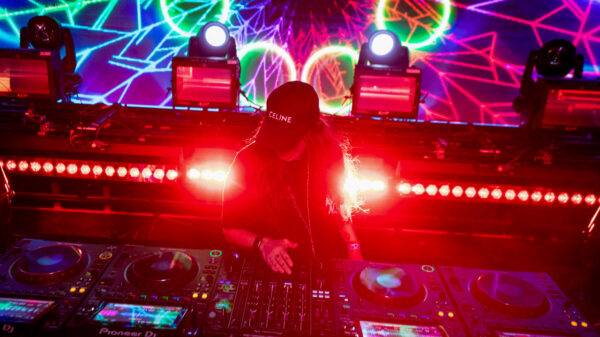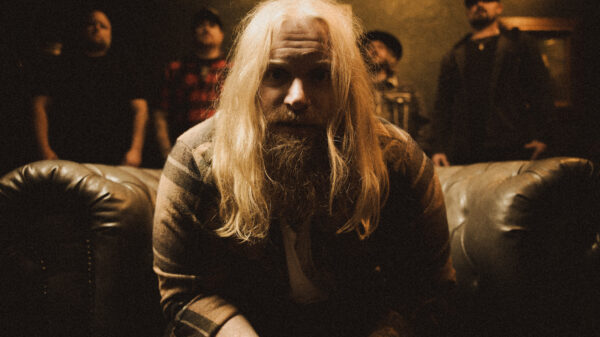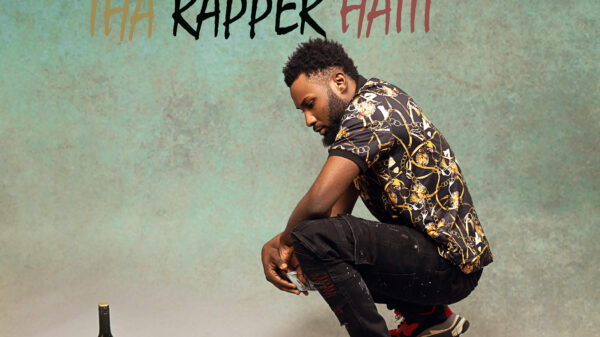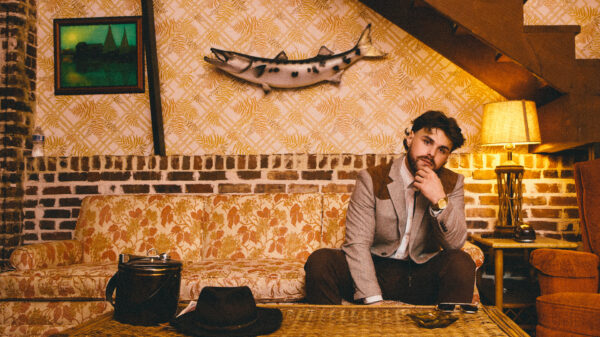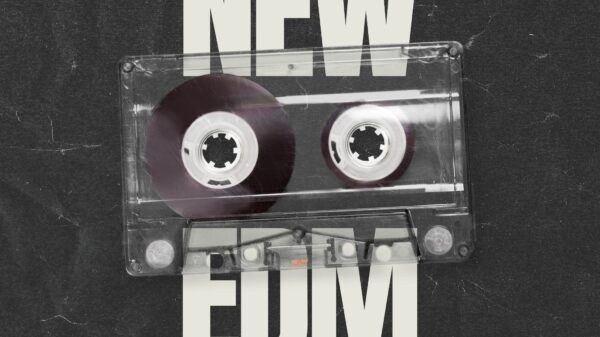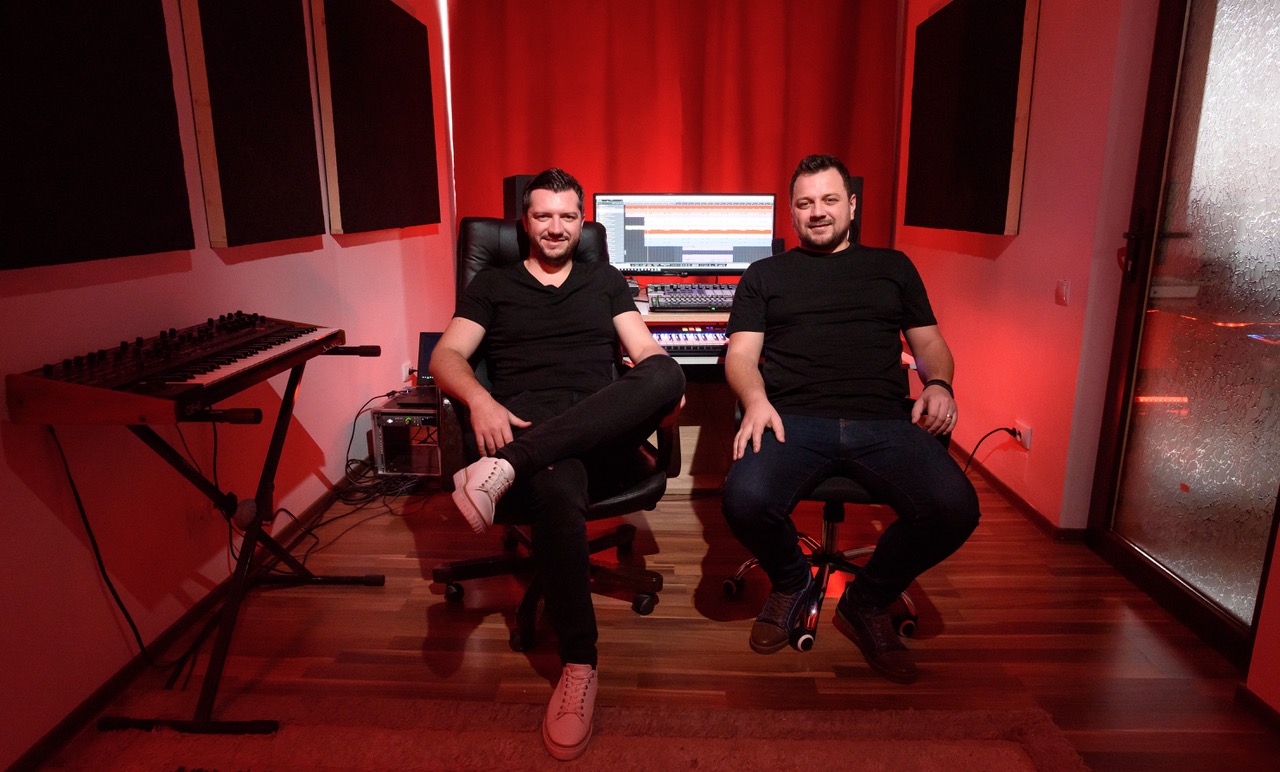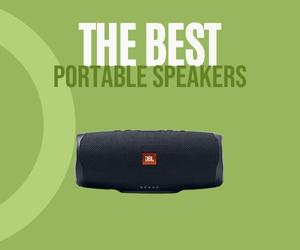Stefanno B2B Julianno, a DJ and production duo from Romania, have been introducing their distinct blend of Melodic House and Techno to listeners worldwide, showcasing their unique approach through live shows and releases on labels like Coldharbour Recordings and Paul van Dyk’s, Vandit Alternative.
In this interview, Stefanno B2B Julianno joins us to dive deep into their journey, exploring how their partnership began, the evolution of their sound, and the essential gear that shapes their productions. So, get ready to discover more about the approach powering their creativity as Stefanno B2B Julianno sits down to discuss their original perspective, offering an insider's look into their processes.
Hi guys, how are you both doing today?
Hello. Very good, thank you. We’re really excited about your invitation for this interview at EDM Sauce.
Could you share the story of how you both started collaborating as a duo? What brought you together in the world of Electronic Music production?
We met in the first year of high school; we happened to be in the same Philology class in Suceava, a small city in the north of Romania, close to the border with Ukraine. Each of us started listening to artists like John Digweed, Paul van Dyk, Ferry Corsten, Carl Cox, and Hernan Cattaneo. Their music brought us even closer, and we discussed Electronic Music every day.
In the spring of 2007, we participated in a DJ competition organized by the founders of the House Parade and Trance Vibrations brands in Timisoara, Romania. The prize was the opportunity to play on a stage at the festival held in the summer of that year. We were thrilled to win this DJ competition, which brought us back in the summer to play music at our first festival, also being our first gig outside our hometown. We were only 18 years old and happy just to have a gig outside of Suceava. During the competition phase, we didn’t think we would return to the festival in the summer to DJ alongside artists like Marco V, Gareth Emery, Rank1, and Marcel Woods.
From that year, we became resident DJs for these events, participating in all the organized events on the main stages with great national and international Electronic Music artists. Our musical style, technical skills, and the chemistry between us convinced the organizers to propose that we create a B2B DJ project and have our first event in the fall of 2008 at the Timisoara Trance Vibrations event, opening the evening for Rank1, Aly & Fila, and Alex M.O.R.P.H. The evening was phenomenal, with an audience very dear to us. This success convinced us to continue this project for many years to come.
What are the three most essential pieces of equipment in your studio, and why are they crucial to your production process?
Over the years, we’ve changed a lot of studio equipment and locations. We started producing music in 2010 with Ableton as a DAW in the living room of Julianno’s apartment. Being in high school, we met daily in the “studio” to discover how to produce Electronic Dance Music. In our opinion, our first track was a small disaster, but it was signed with a small label, and the track even had a remix from an artist. The second track we produced was a remix for Ummet Ozcan – “Timewave Zero,” which was played in clubs in London by Judge Jules and on his “Weekend Warm-Up” radio show on Radio 1.
Back to studio equipment: at the moment, we work only with digital instruments “in the box.” The first essential piece is the DAW because it incorporates all the production, mixing, and mastering. The second one is the good old Beyerdynamic DT770pro headphones—they help us not to disturb the neighbours. The third is the MIDI keyboard; we have an Arturia Keystep Pro. With it, we can practice and develop our skills, and we can write down those ideas from our minds into the DAW.
Which DAW do you prefer for your productions, and has this preference changed over the years?
In 2010, we installed trial versions of Reason, FL Studio, and Ableton. We tried them all and chose Ableton as our “mentor” in our journey in music production. We worked with Ableton for six years, then took a three-year break. Since 2019, we’ve been working with Presonus Studio One as our main DAW. Compared to Ableton, Studio One attracted us because of its flow, which suits us, and because of the focus by the manufacturers on mixing, mastering, and recording processes.
So today, we work with Studio One as our main DAW, but we also use Ableton as a secondary DAW. In Ableton, we work on some ideas with the help of their plugins.
Are there any unique production techniques or tricks that you use to give your tracks a distinctive sound?
Every day, we learn new things to improve our sound, from the technical side of music production to music theory and harmonies. The music production techniques below are not really unique, but we think they can make a difference between a weak production and a professional one:
- We use a lot of layering on the tracks that need it to make a bigger sound that works better in the mix, mainly on leads and synths, and sometimes on drum elements. The bassline can also benefit from the use of layering.
- On several tracks, we work with a Reverb on the sends, on which we apply an EQ to cut low and mid-lows to get rid of muddy frequencies, an Imager plugin to make the reverb a little wider, and a Sidechain to create a little bit of bounce. Sometimes we insert a Chorus plugin on this send to create movement in the track.
- We often use clipping on most tracks. Clipping helps to cut out the transients that are not heard anyway but affect the final limiter of the master. Our favourite clipper plugin is Standard Clip from SirAudio, which we use on separate tracks and also on buses—most often on instruments with big transients such as drums, keys, and FX. It can also be used as a good distortion technique on certain elements. The proper use of a clipper can gain extra dB, which will help achieve a good and competitive level of final loudness.
- Another important technique is automation. We can automate anything—velocity, EQ, compression, VST filters, FX plugins, distortion plugins (like a parallel distortion), volumes, sends, busses, and so on. Automations are important, especially in EDM, to create movement in the production, to bring a main instrument in front of others, and to have control over the production and over the unwanted frequencies that may appear while adding new plugins.
How do you balance your individual creative inputs when working on a track together?
As a workflow at the moment, each of us works separately on ideas and musical harmonies to create a groovy vibe. We send each other the project back and forth until we have a final version ready to be released. Today's technology, like cloud services or saving the full project in a DAW, is useful for both. Also, WhatsApp is an important pillar of music production—this is where discussions start and where we listen to drafts.
You’ve had experience performing at events like the House Parade Festival and Trance Vibrations. How would you say your live performances have influenced your studio work? Do you keep the crowd's reaction in mind when producing?
We’ve DJed on main stages in front of thousands of people for more than nine years, and this helps us to feel the crowd, to see over the years how the generation of fans changes in front of us, and to analyze musical trends and social media influences directly from where the magic happens—on the dancefloor. Every time we start producing a new song, we imagine ourselves at a DJ desk with those thousands of people in front of us, waiting for us to raise their hands and create nice memories through music. For this reason, we produce dance music and not music to be listened to quietly at home. For example, just a simple snare added at the right moment in a production can create a very interesting vibe at a party.
Your music blends genres like Progressive Trance, House, and Melodic Techno. How do you approach blending elements in your productions to create a cohesive sound?
We always want to add something from our soul to the production, to create something a little different from what is currently on the market. For example, after our trips to the United Arab Emirates, Jordan, and Saudi Arabia, we produced and released a song this year called “YALLA,” a Melodic Techno track with Arab influences, featuring an Arab female acapella and instruments such as oriental guitars and strings. This production was initially rejected by the labels we sent it to, so we decided to self-release it through our collaborator, Tunecore. Surprisingly, the track had success on social media platforms.
We like to start a production with a House groove to create a dance vibe, then add elements of Progressive Techno, and in the breakdown, Trance elements like arps, leads, and keys. This combination of genres represents us at the moment, but we are always open to other musical genres. For example, we are also inspired by rhythmic RnB or Dancehall music.
Having collaborated with various artists and labels, what’s the most valuable lesson you’ve learned from these collaborations, and what influence have they had on your production approach?
Reflecting and looking back, we believe that the most important lesson we’ve learned from the people in the industry we’ve collaborated with is the passion with which they have been working for so many years and the relevancy they uphold as a brand. Their endurance through hard times like the Covid period or other trials in their personal lives, alongside their professionalism and respect for the fans and other artists on and off stage, as well as their planning and focus in the studio during the creation process, and attention to details from a marketing perspective, are all valuable lessons.
During our three-year break from the music industry, we believe that these things influenced us to rediscover our love for music and to see the path to success with a more mature and educated mind compared to 18 years ago when we were 16 years old and first put our hands on some broken CDJs.
What are some new technologies or pieces of gear that you’re excited to explore in the future?
Nowadays, AI technology is on everyone's lips as a novelty that covers all fields, from economics to art. Let's not forget that in music production, early AI technology first started to be used in the 60s when researchers started to develop algorithms that could generate simple music on a computer. In the 2010s, companies like Izotope started to integrate AI, with the first product being Neutron, which introduced advanced AI-assisted mixing functionalities such as “track assistant.” Then in Ozone 8, launched in 2017, they introduced AI as “master assistance.” Basically, the future is technology. We embrace any technology that adds value to the music industry, to fans, and to artists, using it as a tool to create even better music, to create memories for our fans through music, and to create a legacy in the Electronic Music industry.
As for gear, we just ordered a portable audio recorder that will allow us to record sounds from the outside world, customize them according to our preferences, and then insert them into productions to create something truly unique.
From our conversation, it is clear that Stefanno B2B Julianno's passion for Electronic Music continues to drive their innovative approach to production and performance, upholding their commitment towards evolving their sound and making a name for themselves on the global music scene. So, as we round off our interview, we thank Stefanno B2B Julianno for taking the time to speak with us and look forward to seeing where their journey takes them next. No doubt a duo to watch, make sure to keep up-to-date with Stefanno B2B Julianno via social media to stay in the know about any of their news, releases, or projects.
Stefanno B2B Julianno Online



